Scientific reviews. Рубрика в журнале - Economic and Social Changes: Facts, Trends, Forecast
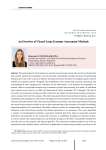
An overview of closed-loop economy assessment methods
Статья научная
The goals related to the transition to a closed-loop economy remain relevant due to the fact that this concept expands the boundaries of environmental sustainability through the ideas of transforming products and waste in the context of effective interaction between the safety of ecological systems and the stability of economic growth. Alongside the possibilities of the closed-loop economy, theoretical and methodological issues regarding the evaluation of the effectiveness of its practices are expanding. At present, there is no generally accepted way to measure a closed-loop economy as a whole, at individual levels (macro, meso, micro), or within the framework of various principles (“R”-strategies). The aim of the work is to systematize existing scientific research on the subject of closed-loop economy assessment, and to conduct their overview analysis. The article uses general theoretical methods of analysis, synthesis, comparison and classification, which meets the objectives of a descriptive review. Secondary data analysis is chosen as the main method. The study made it possible to trace trends, systematize approaches to assessing the closed-loop economy and gain an up-to-date understanding of the dynamics of scientific knowledge regarding methods of its assessment. We define reference points for categorization and structuring of indicators of the closed-loop economy and classify approaches to its assessment. The review identified a number of methodological problems: assessment methods should be based on generally accepted definitions and principles of the closed-loop economy, its established strategies and business models, as well as comply with national objectives and national strategies in the field of sustainable development and take into account industry and regional specifics. The assessment methods studied in the work are systematized and classified relative to the level of application of closed-loop economics practices (at the micro, meso, and macro levels), which can help strengthen the effective subjectivity of multi-level actors in the implementation of closed-loop economy projects.
Бесплатно
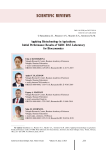
Статья научная
The development of the agro-industrial complex is one of the state priorities in the context of ensuring food security in the Russian Federation. At the same time, the vector of development of ecological agriculture has recently become more pronounced (Strategy for Scientific and Technological Development of the Russian Federation No. 145, dated February 28, 2024; Strategy for the Development of Organic Production until 2030 No. 1788-r, dated July 4, 2023; FAO documents, etc.). Given that the Northwestern Federal District specializes in dairy farming, it is of particular importance to improve the system of cattle feeding, forage production and forage harvesting in the region. Enzymatic and probiotic preparations in animal feeding, microbial growth-stimulating preparations, and biopesticides represent an environmentally safe way to improve the agro-industrial complex. In modern geopolitical conditions, with a high level of sanctions pressure on Russia, the need to develop domestic biological products and their implementation is becoming more obvious. One of the tasks for Vologda Research Center of the Russian Academy of Sciences (VolRC RAS) in such conditions is to implement research projects related to ensuring economic growth and sustainable development of territories based on the use of biotechnology achievements. In this regard, in December 2018, a laboratory for bioeconomics and sustainable development was created at VolRC RAS. During the six years of the laboratory's existence, its team has carried out significant work on the development of this research area. The aim of the article is to analyze and summarize the experience of conducting research on the use of biological drugs that, when being used in the agro-industrial complex, can contribute to addressing the issue of food security. As part of the work, the laboratory's research results have been disseminated on the territory of the Vologda Region: the potential economic effect of using the technology on the entire dairy livestock of the Vologda Region can reach 1.1 billion rubles annually.
Бесплатно
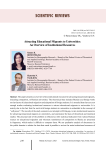
Attracting educational migrants to universities: an overview of institutional resources
Статья научная
The paper presents an overview of key institutional resources for attracting educational migrants, including compatriots, to Russian universities. The theoretical base includes Russian and foreign works on the theory of educational migration and adaptation of foreign students. It is revealed that there are not enough studies evaluating institutional resources to attract educational migrants to universities. It is mainly due to the fact that the work with foreign students in universities is embedded in the concept of “soft power”. The novelty of the study consists in our attempt to fill this gap, review institutional resources for attracting educational migrants to universities, and systematize the data of theoretical and empirical studies. The practical side of the problem is reflected as well: statistical indicators from various Russian sources on educational migration and voluntary resettlement of compatriots to Russia are presented in fragments, which makes it difficult to compare them. We use qualitative analysis of documents in the public domain to obtain the data that made it possible to review the main institutional resources of Russian universities to attract educational migrants, including compatriots. We consider which resources of Russian universities in working with foreign students can be interpreted as “attracting” factors; whether there are special tools for working with foreign students from CIS countries and/or compatriots. We draw conclusions that Russian universities do not have well-elaborated strategies to encourage young compatriots (Russophones) to participate in educational migration. Universities do not consider this category of applicants as a separate group, which would help optimize management decisions focused on the development of migration, demographic and educational policies. These circumstances bring to the fore the need to optimize institutional resources and management decisions regarding the attraction of Russophones to Russian universities.
Бесплатно
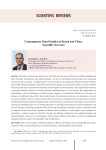
Contemporary rural studies in Russia and China: Scientific overview
Статья научная
The paper explores key directions in the study of rural areas in Russia and China, highlighting both thematic intersections and differentiations, as well as identifying research gaps and promising avenues for future inquiry. A comprehensive content analysis was conducted using the eLibrary (RSCI) and Google Scholar databases. Keywords and thematic queries were selected to reflect current scholarly interests in the socio-economic development of rural regions in both countries. The analysis demonstrates a growing academic interest in socio-economic transformations of rural spaces, the implications of urbanization, and the dynamics of rural-to-urban migration. Considerable attention is also given to changes in traditional ways of life, the transformation of community relations, and alterations in social structure. Notably, Chinese research tends to frame rural areas as complementary to urban spaces, whereas the Russian scholarly tradition predominantly examines them as autonomous and distinct environments. Among the identified gaps are the limited attention to individual dimensions of rural development and to the formation of prestige associated with rural living. Insufficient coverage is given to processes such as migration flows, the return migration of former urban residents to rural regions, and strategies for cultivating a positive image of rural life. Overall, the findings underscore the multidimensional and interdisciplinary character of contemporary rural studies in Russia and China, as well as a heightened scholarly interest in issues of sustainable rural development.
Бесплатно
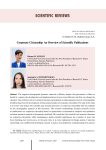
Corporate citizenship: An overview of scientific publications
Статья научная
The negative demographic dynamic observed in Russia, despite the government's efforts to handle it, requires the development and implementation of new, more effective tools that can change the situation. One of these tools is to promote business participation in addressing the country's demographic problems based on the development of ideas and principles of corporate citizenship. The aim of the study is to review and analyze the scientific and research discourse on corporate citizenship with an emphasis on the demographic segment of this discourse. The research methodology includes scientific review of publications on corporate citizenship based on quantitative (scientometric analysis) and qualitative (content-semantic analysis of documents) methods. We reveal that the scientific and research discourse on corporate citizenship, while maintaining a stable scientific significance for a number of years, has been shrinking over recent years. At the same time, it is more widespread in foreign studies. Corporate citizenship is an insufficiently developed concept, it lacks a clear definition, understanding of its essence and determinants. In the demographic sphere, corporate citizenship is not conceptualized. In the course of the analysis, we identify trends in the development of the discourse, and compile a scientometric portrait of Russian publications on this topic. The inability to gain full access to the international citation databases Web of Science and Scopus due to the sanctions imposes certain restrictions on our research regarding the scientific review of the foreign segment of the discourse. From a scientific and theoretical perspective, the significance of the work lies in filling in the lack of scientific reviews in the field of corporate citizenship, raising the issue of conceptualizing this phenomenon and intensifying its research. Practical significance is determined by the possibility of using the findings by other authors dealing with issues of corporate citizenship and related topics. The systematization and conceptualization of this subject area will contribute to a more active promotion of the ideas and principles of corporate citizenship in Russian enterprises, as well as a more active involvement of Russian business in solving Russia's national strategic tasks.
Бесплатно
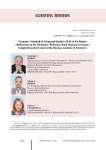
Рецензия
At the new stage of Russia’s development, it becomes especially important to find solutions to urgent economic and social issues of regional development so as to ensure full economic sovereignty and decent living standards and quality of life for Russian citizens. The article discusses the issues related to increasing the role of scientific support in addressing these problems through the prism of a notable scientific and practical phenomenon - the publication of the dictionary-reference book Regional Economics in 2021; the book was prepared by a team of authors at RAS Vologda Research Center and contains the results of the 30-year work of VolRC RAS on providing scientific and practical support to regional and local authorities of the Vologda Oblast, which contributed to the development of the region’s economy, raising the standard of living and improving the quality of life. The published scientific and practical methods for solving regional demographic, economic and social problems and improving the performance of regional and local government bodies represent the main achievements of the book. The article shows that theoretical, methodological and practical solutions to topical regional issues, using the example of the Vologda Oblast, provide scientific and practical communities of other Russian regions with tools for addressing similar problems, taking into account Russia’s spatial features. We outline a number of considerations to develop the theoretical, methodological and practical base of the book so that its methods could be applied creatively in other regions of Russia.
Бесплатно
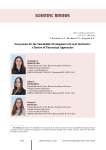
Ecosystems for the Sustainable Development of Local Territories: A Review of Theoretical Approaches
Статья научная
The disproportions of Russia's spatial development (shrinkage of the developed space, polarization of the settlement system, distortion of the support frame) are challenges for sustainable development and for ensuring national security. In such conditions, local territories are most vulnerable, which, if located far from the centers of resource attraction, have limited opportunities to respond to current challenges. In turn, it is at the local level that the practical implementation of the goals and objectives of sustainable development is carried out, which ultimately determines the situation at higher levels. The ecosystem approach, which assigns a significant role in this process to the participants of the territorial ecosystem and their interaction with each other and with the external environment, seems promising for the study of the sustainable development of local territories. The aim of the review is to analyze scientific discourse on the sustainable development of local territories in the context of an ecosystem approach. The work uses general scientific methods of critical analysis, comparison, generalization, grouping and classification. The information base includes Russian and foreign scientific literature on the sustainable development of individual territorial units and the ecosystem approach, as well as international and Russian regulatory documents in the field of sustainable development. The article discusses terminological features of the concepts “sustainable development”, “ecosystem approach” and “local sustainable development territories”. We reveal the intersections of the concept of sustainable development and the ecosystem approach, and the possibility of their logical combination into a single conceptual framework in relation to local territories. On the basis of generalization and systematization of scientific literature, we define the terms “sustainable development of local territories” and “ecosystem for the sustainable development of local territories”, and identify key structural and functional elements of the ecosystem for the sustainable development of local territories.
Бесплатно
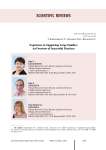
Experience in supporting large families: an overview of successful practices
Статья научная
A new protracted wave of depopulation in Russia, caused by birth rate decline and high mortality, poses serious risks to the labor potential, economic and social development of the country. In recent years, the government has been taking active measures to raise birth rate. Taking into account the fact that the growth potential of birth rate lies in an increase in the proportion of large families, it is necessary to update effective mechanisms for regulating the number of children in families. In this regard, it is interesting to study the tools for supporting families with children implemented by foreign governments in the context of the recorded population fertility dynamics. The aim of this study is to review government measures to stimulate fertility and support large families in countries around the world. The information was derived from electronic databases of Russian and international statistics, websites of foreign governments, and scientific literature on the research topic. In the course of the work we used general scientific and empirical research methods. The analysis showed that in most countries there are no measures to support large families as a special category, and demographic policy is limited to providing women with short-term paid maternity leave and monthly childcare benefits. Most of the aid goes to poor families. Some countries provide tax and pension benefits for large families, and childcare allowances that increase with the birth of a subsequent child. The demographic and family policy being implemented in Russia is focused to a greater extent on families with children, including those with many children, which has the status of state priority. The following formats of support for families with children are of practical interest from the point of view of potential application in Russia: Polish programs “500+”, “Big family card”, “Mother 4+”; programs implemented in some oil and gas exporting countries: “Marriage bonus (loan)”, allocation of housing to a young family, opening an account for a newborn and its regular replenishment, tuition fees; “maternity leave” for men and the opportunity to use parental leave for eight years in the Nordic countries; partial or full compensation for babysitting services, including for close relatives caring for a child; payment for preschool educational institutions, vacation clubs, etc. in a number of European countries. Practical significance of the work lies in the possibility of taking into account international experience in the development of federal and regional programs to support potential and actual families with many children
Бесплатно
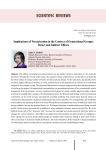
Implications of precarization in the context of generational groups: direct and indirect effects
Статья научная
The effects of employment precarization are the subject of active discussion in the scientific literature. Despite the novelty of the topic, the negative impact of this process on the labor and daily life has been subject of a large number of works over the previous decade. At the same time, age specifics have not been widely reflected in studies: as a rule, authors focus on the population as a whole or its individual categories, for example, youth. The purpose of the article is to analyze and generalize the existing experience of studying the impact of employment precarization on generational groups of the economically active population. For this purpose, we have examined the situation of young, middle-aged and older workers involved in unstable labor relations. The information base is the Russian and foreign sources of empirical orientation; in the work we have used general scientific methods. The results show that the impact of employment precarization on generational groups has serious specifics. For young people, job instability mainly affects the planning of their own future forcing them to postpone the issues of starting a family and having children, leaving the parental home, etc. Prolonged transition to stable employment harms mental health, which is most pronounced in adulthood, when instability becomes part of everyday life. It can be difficult to get out of the “precarity trap” because low earnings and social insecurity limit the ability to change the current situation. The effects of employment precarization for older people are ambiguous. Even taking into account all the disadvantages of unstable labor relations, having at least some work is often a necessity to maintain a habitual lifestyle. The main limitation of the research is the generalization of information obtained using various conceptual constructions and methodological tools.
Бесплатно
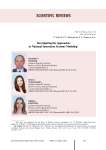
Investigating the Approaches to National Innovation Systems Modeling
Статья научная
The article analyzes some modern approaches to modeling national innovation systems that are presented in scientific literature. We use modern methods for analyzing bibliography and preparing literature reviews: co-occurrence, and the PRISMA (Preferred Reporting Items for Systematic Reviews and Meta-analyses) method. With the help of this approach we conduct relational analysis of documents by systematizing and arranging keywords into special semantic clusters that reflect interest in modeling national innovation systems. The research focuses on mathematical models of national innovation systems and models that use empirical quantitative data analyzed with the help of various econometric methods based on the Russian specifics of economic development. In this regard, when searching for and analyzing relevant sources, we used the filters “Russian innovation system”, “national innovation system and Russia”. We have revealed that the majority of publications focuses on such aspects as digitalization, neo-industrialization, innovation policy and technology. We identify four directions for modeling national innovation systems: macroeconomic modeling of innovation systems, modeling of growth based on the development of innovation systems, modeling of innovative activity of firms, modeling of institutional factors contributing to the development of innovation systems. The national innovation system is modeled mainly through the use of indicators related to patenting, the volume of exports and the production of innovations. Factors determining the development of national innovation systems in this context include R&D and innovation expenses, investment in technology, education, infrastructure, human resources and the quality of human capital. Conclusions on the analyzed models often do not coincide regarding the role of the state in financing innovations, the role of various elements of the institutional structure of the economy, such as intellectual property rights and mechanisms for their protection, as well as the role of political factors. On the other hand, the conclusions are consistent in terms of the impact of innovation on economic growth and development: we note a positive correlation with indicators reflecting the development of national innovation systems.
Бесплатно
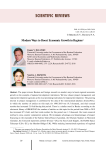
Modern ways to boost economic growth in regions
Статья научная
The paper reviews Russian and foreign research on modern ways to boost regional economic growth on the example of regional development institutions. We have chosen project management and regional development agencies as the most promising institutions for regional development. The growing interest in project management is confirmed by the data of the international database ScienceDirect, in which the number of articles on this topic for 1996-2019 was 19.5 thousand, and their annual number has increased 3.8-fold during this period. There is a similar trend in Russia: according to the electronic library eLIBRARY.RU the number of articles on this topic for the period from 2000 to 2019 has increased 87.5-fold, and their total number for this period was 1.2 thousand. Our main research method is cross-country comparative analysis. We investigate advantages and disadvantages of project financing on the examples of the Sydney Opera House (Australia), the Olympic Stadium in Montreal (Canada), the Concorde supersonic airliner (France-UK), the Suez Canal (Egypt), the Hubble Space Telescope (USA-EU), the Humber Bridge (UK). While studying international experience of regional development agencies, we have classified them into three types: agencies for ensuring regional leveling within the country (Scotland, Australia, Canada); agencies for ensuring economic leveling within an international association of countries (EU-Poland, Romania, Portugal); agencies that help countries join the world’s leading nations on the basis of the innovative economy (China, Malaysia, Botswana). A summary analysis of the works that study the activities of regional development agencies has allowed us to present the institutions under consideration on a system-wide basis and to identify their weak and strong points that should be taken into account in the development of this tool that helps enhance economic growth in Russia’s regions.
Бесплатно

The experience of Russia and China in addressing the age aspect of the digital divide
Статья научная
The process of demographic aging is global and irreversible, and the share of the elderly in the population of most countries will steadily increase. This sets strategic tasks of taking these trends into account in management, creating conditions for quality life of people in older ages. In the conditions of rapid digitalization of the economy and branches of the social sphere, the issue of integration of elderly people into modern processes, monitoring the dynamics and factors of inclusion, and creating conditions for leveling various kinds of related exclusion is acute. The aim of the article is to comparatively analyze the practices of digital inclusion of the elderly in China and Russia in order to identify opportunities to improve their effectiveness. We used a complex of general scientific methods and relevant empirical base, consisting of data from population censuses and statistics on the development of information and communication infrastructure in the countries under consideration. We show the current state of research on the problem of age digital divide in China, Russia and other countries. We outline the scale and main trends in the use of digital technologies by elderly people, which unite China and Russia and are expressed in the growing number of Internet users in older ages, the desire for more active use of mobile Internet and mobile apps. The main constraints and challenges for the elderly with inadequate digital inclusion are formulated. In the conclusion, the main directions of development and increasing the effectiveness of inclusion practices of the older generation in digital interactions are formed. The results may be useful for formulating management decisions for successful digital development in the countries under consideration.
Бесплатно
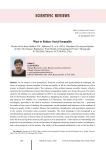
Ways to reduce social inequality
Рецензия
In the context of new geopolitical, financial, economic and epidemiological challenges, the issues of ensuring a decent standard of living and quality of life for the Russian population are still a priority in Russia’s domestic policy. The relevance of this problem arouses scientific interest, which is confirmed by the publication of more than fifteen monographic studies over the past five years. The article analyzes the findings of a study published in 2022 in the monograph Standard of Living and Quality of Life of the Russian Population: From Reality to Designing the Future, prepared by a team of authors and edited by V.N. Bobkov, N.V Loktyukhina, E.F. Shamaeva. The authors of the book - economists, sociologists, specialists in the field of medicine, environmental protection and labor law - presented the results of four years of studying the components, social standards and indicators of the standard of living and quality of life in modern Russia, their qualitative identification and quantitative assessment in the context of excessive socio-economic inequality. The main advantage of the monograph is an interdisciplinary approach to studying the quality of life, which allows for a comprehensive analysis of this indicator of the state of society from the standpoint of economic, social and legal relations. The article notes the structuring of the material, the sequence of its presentation - from theory to methodology and practical recommendations, brevity and accuracy of judgments about the categories under consideration, and a clear perspective of the authors. The novelty of the proposed publication is due to the fact that it investigates new tools of governmental and corporate policy to regulate the standard of living and quality of life, in particular, the presentation of the authors’ concept of a medium-term national program to reduce absolute monetary poverty. These tools are becoming an important step toward reducing social inequality. In practice, this is “designing the future”, as the authors put it, and this is what provides the monograph with both scientific and practical significance.
Бесплатно

